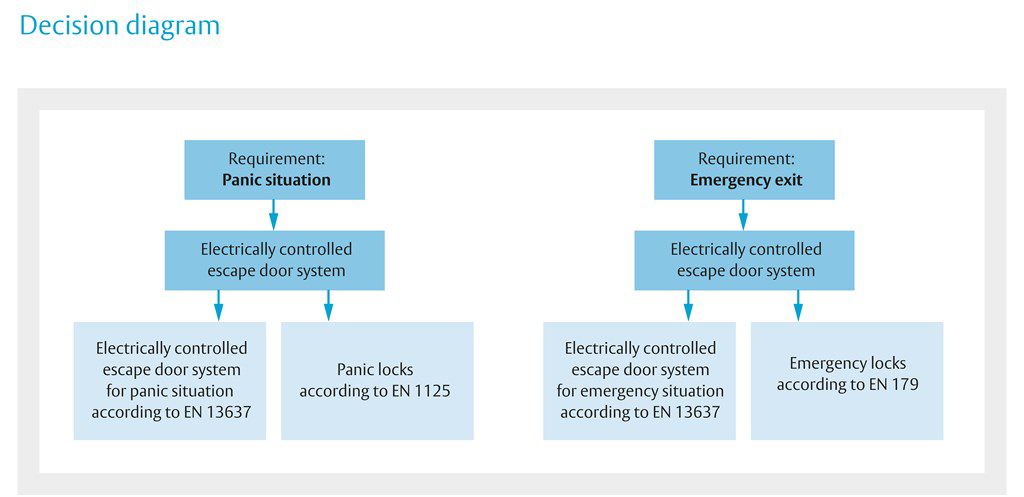SN EN 13637 - The standard for electrically controlled escape door systems for doors along escape routes


Electrically controlled escape door systems in accordance with SN EN 13637 are increasingly forming part of the security system in buildings. Electric locks and controls are also being used ever more frequently. These electrically controlled escape door systems offer increased security against misuse. Using tested components in accordance with SN EN 13637, the flow of people can be controlled in both directions. Depending on the equipment, these systems are suitable for escape doors with panic and emergency exit function. Electrically controlled escape door systems enable safe and effective opening of the locked doors with a maximum of two actuations for release.
Delayed release and release blocking are available as new functions. SN EN 13637 outlines additional conditions here. However, these functions must be approved by the responsible authorities.
The requirements apply, regardless of whether or not people are present in the building. For safety reasons, the entire additional functions of the system, such as connection to the access control, must comply with the principle of failsafe release at all times (failsafe principle during release).
Electrically controlled escape door systems consist at least of the following elements, individually or combined:
- Triggering element for releasing the electrical lock for the exit
- Electric lock for securing an escape door
- Electric control for supplying, connecting and controlling electric locks and emergency buttons
- In addition to this, electrically controlled escape door systems may also include a time delay and/or the mode for blocking the release
Technical structure
Technically independent components
- An electrically controlled escape door system may be combined with «technically independent components» – mechanical escape door locks in accordance with SN EN 1125 or SN EN 179. The manufacturer of the electrically controlled escape door system must specify which escape door locks can be combined with the escape door system in accordance with SN EN 1125 or SN EN 179.
- «Technically independent components» means: Escape door locks without any electrical and/or mechanical interaction with the safety functions of the escape door system.
Technically dependent components
- In accordance with SN EN 13637, escape door systems may contain «technically dependent components» of an escape door lock in accordance with SN EN 1125 or SN EN 179 with electrical and/or mechanical interaction with the safety functions of the escape door system. One possible example is a triggering element, which is installed in the operating element or an electrically controllable operating element.
- In this case, the escape door lock is part of the system as a whole and is covered by SN EN 13637. A complete list of all possible components must be provided in the manufacturer instructions
Electric lock without escape door lock
- In addition to combinations with escape door locks, SN EN 13637 also permits doors to be locked with electric locking elements only, i.e. without an escape door lock. A traditional emergency switch may be used as a triggering element, or a dummy of a pushbar/handle in accordance with SN EN 1125 or SN EN 179.
IMPORTANT: This version is not permitted for doors that have to fulfil additional fire and/or smoke protection requirements.

